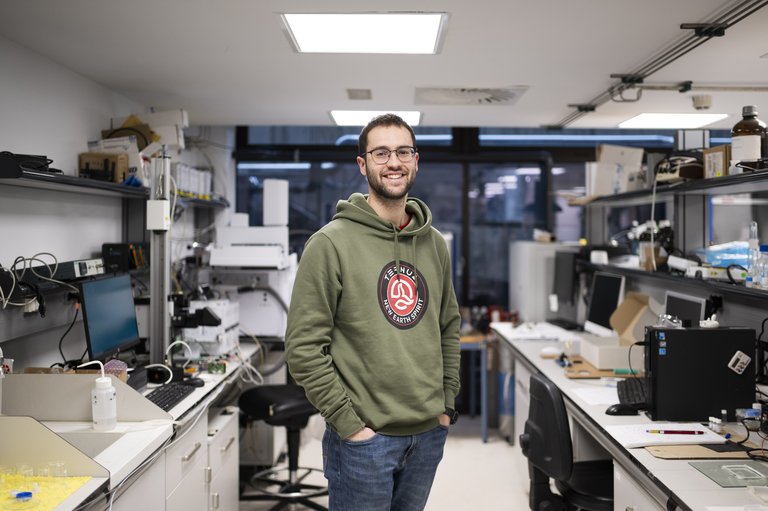The CO₂₂ has been converted to methane using sunlight

A researcher at the Public University of Navarra has developed a technique for converting carbon dioxide into methane using sunlight as an energy source. This is an important step forward in the field of carbon capture, storage and utilization technologies. These technologies are essential for reducing emissions in sectors where decarbonisation is particularly complex, such as the cement industry, aviation or maritime and road transport.
The aim of the doctoral thesis of the researcher Mikel Imizcoz Aramburu was to take advantage of CO2 as a source of raw materials and carbon for the synthesis of fuels such as methane. This methane can be used as a neutral substitute for natural gas emissions, since between 83% and 97% of this fossil fuel is methane, depending on the mine. In this way, renewable methane could be used as a fuel in thermal power plants, generating neutral carbon emissions: the CO₂₀ generated during combustion is the same as that previously captured and used as a raw material for fuel synthesis.
To convert CO₂₀ to CH₂O, Imizcoz studies the Sabatier reaction. This process, first proposed in 1902, combines carbon dioxide with hydrogen (H2) to produce methane and water. In order for this methane to be considered as a clean fuel, it must be obtained by trapping CO₂₀ from an emitter source and hydrogen must originate from the electrolysis of water with renewable energy.
For the Sabatier reaction to occur, in addition to carbon dioxide and hydrogen, a catalyst must be used to facilitate the interaction between gas molecules and accelerate the chemical reaction. Similarly, to initiate and maintain the reaction, energy must be supplied to the system.
“One of the main innovations of this study, proposed from the outset, was that the energy source needed to initiate and maintain the reaction should be at least in part sunlight,” says Imizcoz. Thus, the researcher worked with photo-thermocatalysis. “Foto-termokatalizatzaileek eguzkiaren energia guztia baliatzen dute berotzeko eta elektroien eszitazioa eragiteko, bi prozesuek erreakzio kimikoa eragin dezaten”.
As proof of the latter concept, the catalysts, based on ruthenium and nickel, were exposed to concentrated sunlight to generate the Sabatier reaction. In this way, methane was produced from carbon dioxide without the need for additional energy input to reach the reaction temperature.
Some of the results of Mikel Imizcoz’s PhD thesis include “Applied Catalysis B: Published in the scientific journal “Environment and Energy”.
Buletina
Bidali zure helbide elektronikoa eta jaso asteroko buletina zure sarrera-ontzian











